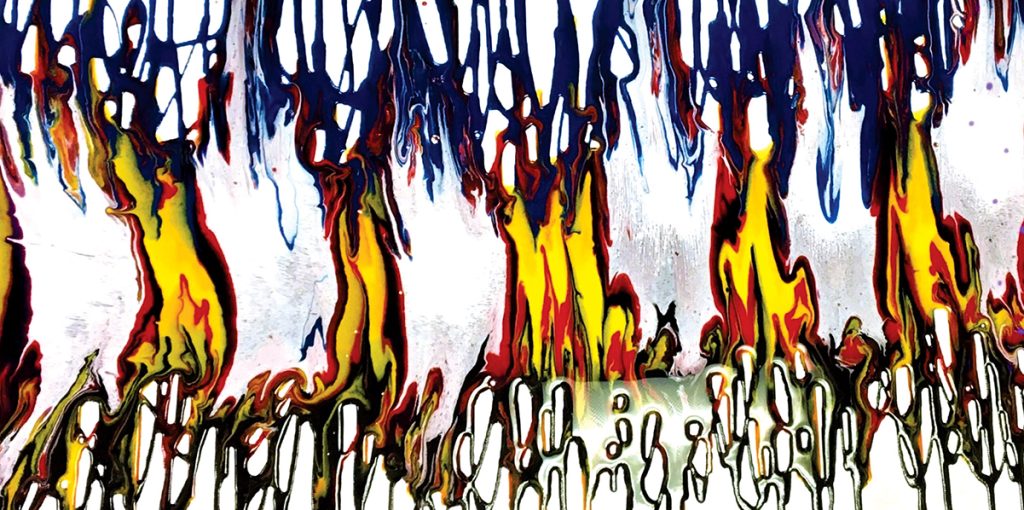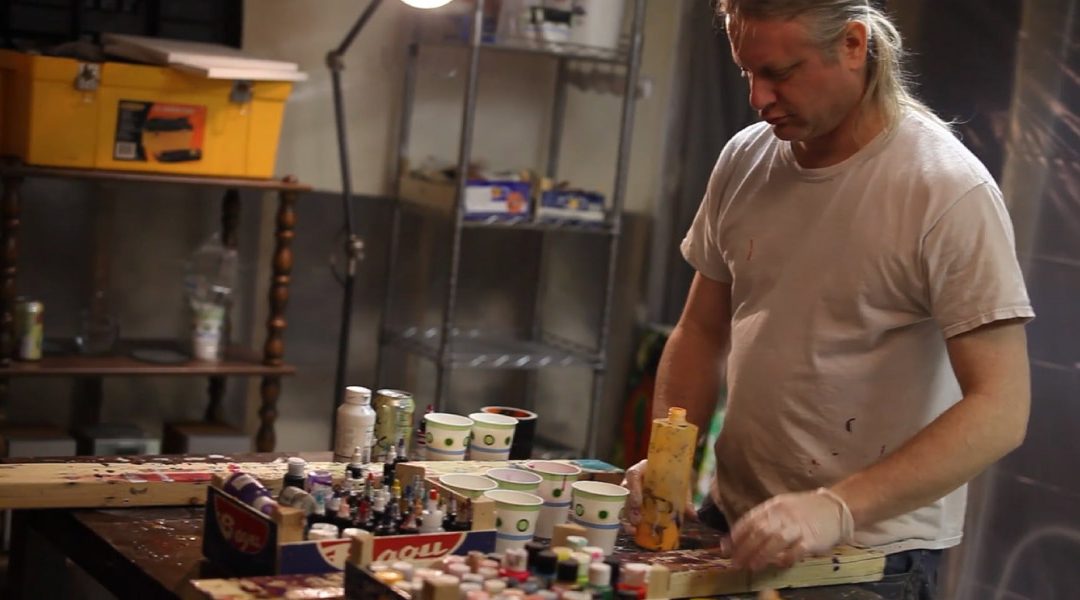While chaotic at times, abstract art still shows imperfections and defects, which equate to a careless representation of oneself as an artist. Suppose you plan to sell your artwork and want to be taken seriously. You spend time honing your crafting skills to create, sell, and share these pieces of your soul with the world. To make your masterpiece last for many years to come, the best treatment starts with quality materials.
What I Look for in Quality Pouring Materials
Working with acrylics and other mediums in the pouring realm differs from creating with thick, full-bodied acrylics. To get acrylics to behave the way you want, a medium must be added to make them “pour.” There are numerous ways to create a pouring medium yourself; however, quality in terms of both material and outcome makes one of the most significant differences in pours.
People just getting started don’t want to spend a lot of money trying various expensive products for simply learning. That’s fine, as this is where products such as Floetrol, water, and similar glue concoctions have their place.
My personal experience was nothing but frustration when using anything other than a high-quality pouring medium. Once I found a mixture that worked for me, I never looked back. My product of choice is Liquitex Professional Pouring Medium, as it gives me all the characteristics of a high-quality pour in one product time after time.
Here’s what I look for when judging Jelly pour quality:
Consistency
Because this art form relies on fluidity, flow, and motion, the consistency of the pouring medium and other materials used is critical for me to “guide” the colors in a fluid yet controlled manner. Liquitex Professional Pouring Medium gives me the consistency I desire consistently since it’s easy to work with and flows to perfection without needing to play or mix different products together to create. It’s ready to go and allows me to jump into creating without spending time playing mad scientist.
Not only is the consistency perfect, but the ease of interacting with various paints and end results are incredibly consistent as well. Liquitex’s pouring medium is like working with liquid glass that flows like house paint or syrup. It dries with a gloss like candy or glass without being “flashy” but at the same time is durable, flexible, and has a low viscosity. Furthermore, Liquitex Professional Pouring Medium can be used on materials ranging from wood, glass, and canvas. With other products, you have to worry about yellowing, crazing cracks, and fading that occur due to uneven drying times between lower and top levels. I NEVER use water in my pours and prefer it straight out of the container. With Liquitex, I’ve never had an art piece craze on me, and mine have withstood hours in direct sunlight while at art shows while still retaining a wet, new-pour look over time.
Paint
I learned this over time, but the quality of the paints used is also critical. The same applies here. The paints I use are professional grade and expensive. In return, I get vivid layers of colors and incredible mixing results. I use both Liquitex and Golden acrylic products because their pigment is bold, plus these paints handle very well to maintain individual clarity even when the pigment loads change due to mixing other colors and various puddling that occurs when I pour.
I use the following paints for pouring material:
Liquitex
Matisse
Golden
Matisse’s Fluid Acrylics and Golden’s Fluid and High-Flow Acrylics are unique. Watery but bold, I use them to mix with Liquitex medium or drip directly into the crystal transparent pouring medium for incredible spreading and fading behaviors. Liquitex’s Soft Body Acrylics are perfect for creating solid base colors to pour because they are thicker in consistency, becoming extraordinarily smooth and always sitting perfectly like heavy cream. Again, I never use water in any of my materials, so I think this is why my pieces stand out.

The consistency of the paint is crucial for Jelly pours.
Science and Physics
Once you understand the science of Fluid Painting, you suddenly have a lot more control over artwork that once seemed only accidental. I never considered physics and science at work when pouring.
Through experimenting, I became more and more fascinated with the interactions of colors, mediums, gravity, and vibrations on a Jelly pour. Because I use sound and music vibrations to assist my pours the consistency, paint pigment, and weight of colors play a huge role in determining the outcome and pour quality. The medium and paint I use need to be sensitive enough to capture subtleties created from the many nuances I use to further define my pours, such as through intense vibrations and other individual frequencies created while being hit with extreme sound pressure levels from other sources.
Understanding the science around pigment as well as the weights of colors, gravity, and other natural forces can open up a whole new world of creative experimentation in your work.
Surface
The surface being poured on is another factor in terms of pouring quality. As I said, I can pour on many surfaces; however, canvas selection is a personal challenge as other elements play into consideration regarding surfaces.
Acrylic pours can get quite heavy, so the canvas’ strength is essential. The heavier your pour, the more likely the center of the canvas is to bow, causing pooling to occur. Pooling can add to the pour’s quality and characteristics as long as it’s not a distractor. For this reason, pooling needs to be monitored throughout the pour as well as while drying.
Clean Working Area
Keeping your working space clean is just as crucial as your materials. It makes no sense to spend good money on quality materials if the result is dust, hairs, paint chunks, or bugs caked into the piece. Plastic sheets and draped canvas on the floors will help keep your environment clean while also keeping your area isolated from other areas or artifacts as much as possible. Again, plastic sheeting can help isolate your work area and minimize the dust that can land in your pours.
Other Things That Can Impact Quality
- Bubbles
- Bubbles can occur when pouring if your paint is poured too quickly or has not had time to settle after mixing. I run a butane heat torch over the surface of my pieces to pop bubbles or incinerate hairs and dust particles after pouring.
- When to Stop
- Knowing when to stop is a component of the art. Limiting the number of colors will help keep your colors bold and minimize muddiness. Some people use too many colors from the beginning, failing to consider the additional colors that will be created when the colors mix during creation.
- Drying Time & Surface
- Once you know when to stop creating, drying time and surface must be considered. The paint is still fluid and alive for at least 12 hours after completing your pour. As the paint will continue to move and shift, the surface you place your piece on must be completely level. If not, your masterpiece as you know it will slide right off the canvas or become something you did not intend. This can be good, but most are bad. During the dry time, I “babysit” the pour for several hours to monitor its movement for unexpected changes and adjust as needed to maintain the proper level.
In short, Liquitex’s pouring medium product is expensive but worth every penny for the best pouring quality of pieces. I buy it by the gallon, anywhere between $75 and $100, in quantities because I use so much of it and often the little bottles are expensive and not enough for the large pieces I create. Among the various factors for pour quality, I consider when creating Jelly pours, I also think of the multitude of air pressure levels created from different frequencies, such as the impacts of music dynamics and volume. This topic is a fascinating and respected concept within the pouring world deserving of its own blog. Until that time comes, I leave you with some ideas of how I manage the pouring quality of materials in my works, hoping to help other acrylic artists like myself experiment and expand their creative pieces better than before.


